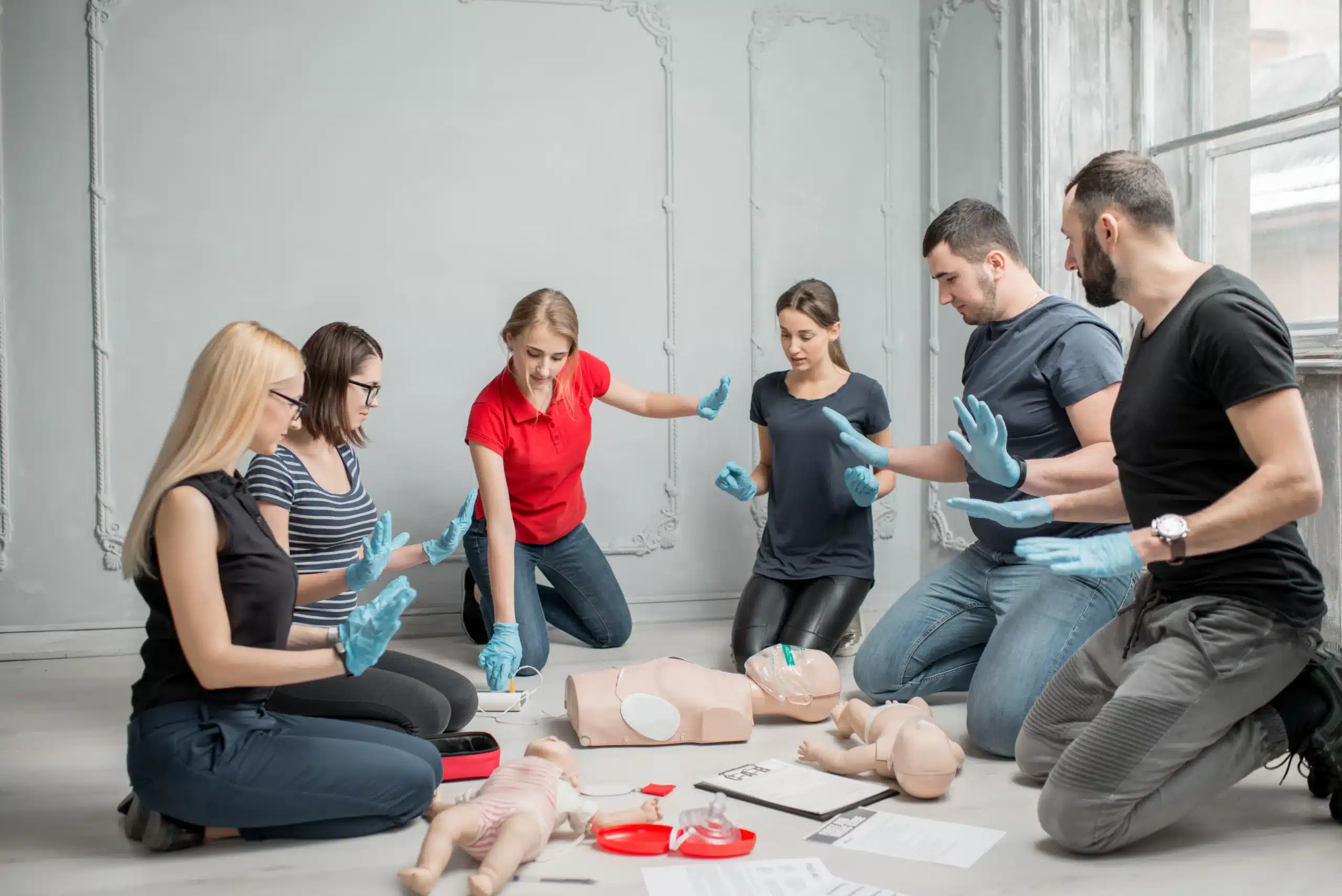When someone experiences a cardiac or respiratory emergency, every second counts. Cardiopulmonary Resuscitation (CPR) is often the critical difference between life and death in these moments. Whether performed in a hospital, at home, or in public, CPR is a life-saving skill that everyone—healthcare professionals and the general public alike—should understand. From its humble beginnings to its essential role in modern healthcare, CPR continues to be a vital part of emergency response.
This guide explores the history, significance, and impact of CPR. It also addresses misconceptions and provides actionable steps to get trained, ensuring you’re ready to make a difference when it matters most.
What Is CPR and Its Role in Healthcare?
CPR, or Cardiopulmonary Resuscitation, is an emergency procedure designed to restore blood flow and oxygen to essential organs, particularly the brain, when the heart or breathing stops. The process involves a combination of manual chest compressions and rescue breaths. Each step focuses on maintaining circulation and oxygenation until advanced medical care can take over.
How Does CPR Work?
- Chest Compressions: These simulate the heart’s pumping action, ensuring blood continues to flow to vital organs.
- Rescue Breaths: Artificial ventilation introduces much-needed oxygen into the lungs to sustain brain function.
Where Is CPR Used?
CPR is universally applicable. It’s performed in hospitals, at homes, during outdoor emergencies, and even in workplaces. Its universality makes it one of the most crucial skills in both professional healthcare and community safety.
The History of CPR
The evolution of CPR is a testament to human ingenuity and scientific progression.
A Brief Timeline
- 1700s: Early methods focused on rescuing drowning victims, including external pressure techniques.
- 1956: Mouth-to-mouth resuscitation was introduced, a game changer in emergency response.
- 1960s: Chest compression techniques were standardized, forming the basis for modern CPR.
- 1970s and beyond: The American Heart Association (AHA) developed and promoted formal CPR training guidelines.
Continuous Improvement
Over the decades, advancements such as automated external defibrillators (AEDs) and the integration of AI in CPR techniques have significantly improved survival rates.
Importance of CPR in Saving Lives
The statistics surrounding CPR are staggering—and eye-opening.
The Reality of Cardiac Arrest
- Nearly 350,000 cardiac arrests occur outside of hospitals in the U.S. annually.
- Less than 12% of victims survive without immediate intervention.
Bystander CPR
Time is critical. Bystander CPR can double or triple survival rates by maintaining blood circulation until professional help arrives.
Chain of Survival
CPR plays an integral role in the “chain of survival,” which includes:
- Immediate Recognition of the emergency.
- Early CPR to maintain circulation.
- Rapid Defibrillation to restore heart rhythm.
- Advanced Care for stabilization and recovery.
The Role of Healthcare Professionals in CPR
CPR competency is a non-negotiable skill for healthcare professionals. Nurses, paramedics, and hospital administrators alike must be prepared for emergencies.
Why Training Matters
Regular training is essential to ensure effectiveness. CPR guidelines evolve based on research, requiring healthcare professionals to stay updated.
Who Needs CPR Skills?
- Doctors and Nurses: Often first responders in emergencies.
- Paramedics: Handle pre-hospital care.
- Hospital Administrators: Coordinate emergency response within facilities.
CPR Training and Certification
Becoming CPR-certified is a straightforward but crucial step for both professionals and the general public.
How to Get Certified
- Find a Training Program: Organizations like Safety Training Seminars offer AHA-accredited courses, including CPR & First Aid, Basic Life Support (BLS), Advanced Cardiac Life Support (ACLS), and Pediatric Advanced Life Support (PALS).
- Complete Training: Courses typically last a few hours, depending on the level of certification.
- Earn Your Certification: Aced the test? You’re now ready to save a life.
Why Everyone Should Learn CPR
Cardiac emergencies don’t discriminate—they can happen anywhere. Knowing CPR equips individuals to step in confidently during critical moments.
Debunking Myths About CPR
Misinformation can deter people from performing CPR in emergencies. Here are some common myths—and the truth behind them.
Myth 1: Only Trained Professionals Should Perform CPR
Truth: Any attempt at CPR is better than doing nothing. Even basic chest compressions increase a victim’s chance of survival.
Myth 2: You Could Harm the Victim
Truth: While CPR may occasionally cause minor injuries like cracked ribs, it’s a small price to pay for potentially saving a life.
Myth 3: It’s Too Complicated to Learn
Truth: CPR techniques are straightforward and take only a few hours to master during a training session.
Key Takeaways
CPR’s importance in healthcare and public safety cannot be overstated. From its ability to save lives during cardiac emergencies to its role in empowering bystanders, CPR is a skill worth learning.
- Understand the Basics: CPR combines chest compressions and rescue breaths to maintain blood circulation and oxygenation.
- Stay Trained: Both healthcare professionals and the general public should take CPR courses to master these techniques.
- Act Fast: Immediate action can double or triple survival rates.
Take Action Today
Preparedness starts with you. Whether you’re a healthcare professional looking to renew your certification or a concerned citizen eager to make a difference, Safety Training Seminars has the resources to get you started. Our AHA-accredited courses—CPR & First Aid, BLS, ACLS, and PALS—equip you with the skills needed to save lives.
Don’t wait until it’s too late. Take the first step today. Sign up for a CPR training course in San Francisco Bay Area and become a vital link in the chain of survival.








